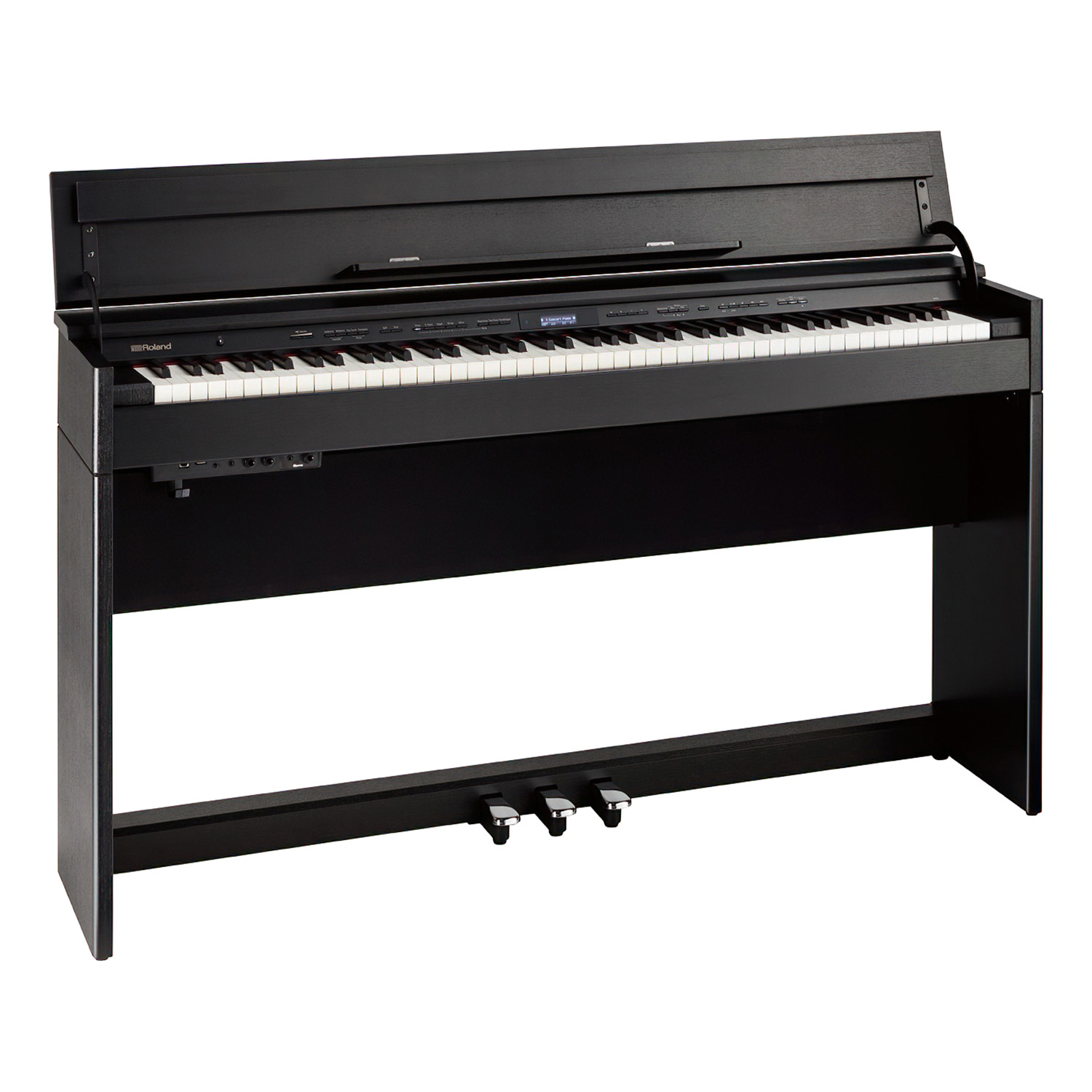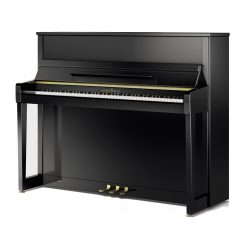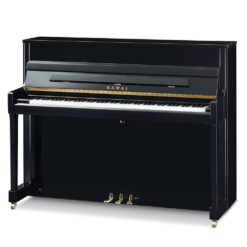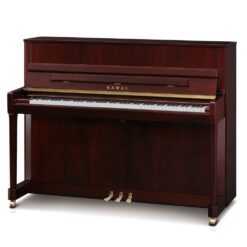W. Hoffmann V131 Upright Piano
CAD 23,995.00
-
The W. Hoffmann V131 upright piano is among the largest European pianos available, and is said by Bechsein to be ‘rooted in the tradition on German concert pianos’. This is particularly meaningful, because for those who don’t know; the W. Hoffmann brand is manufactured by C. Bechstein Europe, and the German-made C. Bechstein Concert 8 model is widely considered as the best vertical piano of all time.
The W. Hoffmann V131 like the rest of the W. Hoffmann Vision series was redesigned in 2015 by the R&D Department at C. Bechstein Berlin, and is one of the most exciting and affordable European pianos on the market; and an excellent alternative to a K-500 or U3
Description
Product Overview
The V131 model from W. Hoffmann is the largest upright piano available from the brand and is among the largest European pianos on the whole market today. The v131 possesses a level of finesse in both tone and touch that many pianos in higher price ranges strive for, and is likely the best value European piano of its height.
The W. Hoffmann Vision pianos feature European parts (except strung-back) and assembly and offer a level of perfection only achievable in limited production instruments. The W. Hoffmann v131 has some very sought-after and premium features including premium solid spruce soundboards (White spruce), double-felted Bechstein-made hammers as well as full range agraffes which all contribute to its powerful, singing sound.
The v131 is 131.5cm tall (or 51.8”) and is therefore in the same size class as the popular K500 and U3 models from Japan. Although it comes in at a slight premium to these models, for musicians who appreciate the increase in tonal clarity, expressiveness, sustain, and projection, it’s worth every penny.
Action
The action which the W. Hoffmann v131 upright receives is a Bechstein designed and made action, which they label their ‘Silver Action’, which is also used in the rest of the W. Hoffmann lines and in the German-made Bechstein Academy line. Bechstein also makes a ‘Gold Action’ which is reserved for their Concert level instruments, as well as a ‘Bronze Action’ which is manufactured by Hailun for their Zimmermann pianos.
For those familiar with Renner Actions, the Bechstein Silver Action is similar in feel, although does have the sense of a deeper key bed, and seems to be designed and regulated to provide more control in lower dynamic ranges. This is likely also enhanced by the extended key-stick lengths.
Tone
The W. Hoffmann v131 ‘has it all’ when it comes to tone: deep bass richness, a solid mid-range attack, and a singing treble that’s not too sharp! This model has the same colorful yet clear tone that the Vision series is known for, but with the best tonal complexity and sustain of the line, due to having the longest strings.
Players who compare the v131 Hoffmann to the 52” Japanese pianos, always remark about the level of purity/clarity in the tone of the instrument and how much tonal and dynamic control they have over all ranges of the instrument. The sustain and projection are also noticeably better, C. Bechstein Europe uses only bass strings of 95% copper purity in the W. Hoffmann v126 as well as full range agraffes, which although aren’t inexpensive to achieve, drastically improve the piano’s tonal clarity.
Hammers
There are only three piano manufacturers remaining today, who continue to make their own piano hammers: Kawai, Yamaha, and C. Bechstein.
Bechstein designs and manufactures every hammer found in their W. Hoffmann and Bechstein branded pianos in Europe with the finest quality felts and woods available to maintain complete control over the quality of these integral components.
It’s also interesting to note that Bechstein has a specific sized/scaled hammer set for each individual model they make (not just for the different lines) to get as much tonal efficiency out of each instrument. All Bechstein hammers are made in Germany.
The W. Hoffmann v131 receives maple-core, double-felted hammers (English felt) which are carefully selected and hand-voiced by the voicing experts at C. Bechstein Europe.
Soundboard
The soundboard in the W. Hoffmann v131 is made of high quality, white spruce and provides the instrument with a beautiful sense of tonal clarity, without sacrificing the rich ‘bottom-end’, which isn’t common with midrange European pianos.
Hoffmann Vision Series soundboards are specially processed for use in any climate.
Rim/Cabinet
One of the various things which the Concert Class, C. Bechstein pianos are famous for, is how involved in the tonal production their cases and rims have always been. It therefore shouldn’t come as a total surprise that the W. Hoffmann v131 (which costs a literal fraction of what a Bechstein costs) is constructed of massive pinewood with a back frame made of solid braces (medium density wood).
Apart from the musical differences between Japanese and European pianos, there are also most certainly some cabinetry differences as well. Vision Series Hoffmann cabinets are finished to a higher standard than is usually seen in their instrument class and feature among other things: bevelled edges, rounded corners, straight/clean lines on the fallboard, a half-opening top lid as well as European-style double caster wheels.
Specs
| Size | Height | H 51.8'' / 131.5 cm |
| Width | W 59.4'' / 151 cm | |
| Depth | D 25''/ 63,5 cm | |
| Weight | Weight 545 lbs / 247 kg | |
| Finishes | Polished Ebony | |
| Warranty | 5 Five Year FULL Manufacturer’s Warranty |
Reviews (0)
Be the first to review “W. Hoffmann V131 Upright Piano” Cancel reply
You must be logged in to post a review.
You may also like…
Schimmel Upright Pianos
Schimmel Upright Pianos
W. Hoffmann Upright Pianos
Related products
Upright Pianos
Schimmel Upright Pianos
Kawai Hybrid
Upright Pianos
Upright Pianos
Upright Pianos
Upright Pianos
Upright Pianos
Upright Pianos
Upright Pianos
Upright Pianos
Upright Pianos















Reviews
There are no reviews yet.